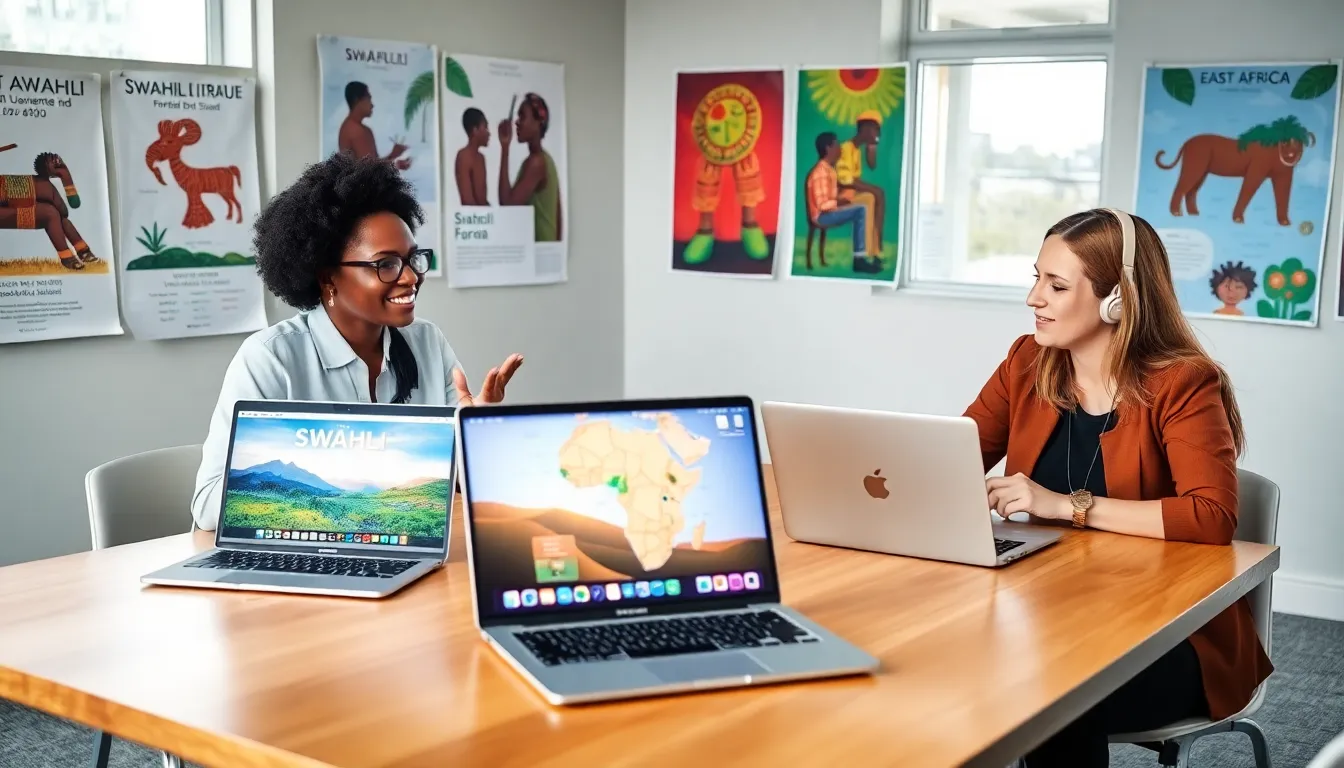Table of Contents
ToggleLearning Swahili isn’t just about speaking a beautiful language: it’s your ticket to a vibrant culture and expanding economic horizons. Here’s a laugh: why do Swahili speakers make great friends? Because they always say ‘Hakuna Matata’, no worries. Joking aside, diving into Swahili opens doors you never knew existed. Whether it’s for travel, business, or simply to impress friends at your next dinner party, understanding this language could be a game-changer. But where do you start? Let’s explore the significance of learning Swahili, its structure, effective learning methods, and the challenges you might face along the way.
The Importance of Learning Swahili

Cultural Significance of Swahili
Swahili is more than just a mode of communication: it embodies the rich tapestry of East African culture. Spoken by millions across several countries, including Kenya, Tanzania, and Uganda, this language weaves together diverse traditions and histories. Understanding Swahili allows learners to appreciate music, literature, and customs that make this region unique. Popular songs by artists like Ali Kiba or literature by authors such as Abdulrazak Gurnah offer fascinating insights when tackled in the original language.
Economic Opportunities in Swahili-speaking Regions
As globalization continues to connect the world, learning Swahili can unlock numerous economic opportunities. Businesses are increasingly recognizing the potential of East Africa’s booming markets. With companies seeking to expand into regions where Swahili is spoken, those who speak the language will have a competitive edge. Knowledge of Swahili can be especially advantageous in fields such as tourism, trade, and international development.
Basic Structure of the Swahili Language
Grammar and Syntax Overview
The grammar of Swahili might seem daunting at first, but fret not. It has a simple and logical structure. Unlike English, which jumps through hoops with its tenses and irregular verbs, Swahili follows more predictable patterns. The language is agglutinative, meaning words are often formed by stringing together prefixes and suffixes. This feature offers learners a greater understanding of word meanings from their components.
Common Vocabulary and Phrases
Starting with the basics, it’s helpful to learn common phrases. Words like ‘Jambo’ (Hello), ‘Asante’ (Thank you), and ‘Tafadhali’ (Please) create a strong foundation. Frequent practice of these phrases allows learners to engage in basic conversations while building confidence in their abilities.
Effective Methods for Learning Swahili
Immersive Learning Techniques
To truly master Swahili, immersion is key. Surrounding oneself with the language through media, music, and even cooking traditional dishes can enhance understanding. Consider watching Swahili films with subtitles. This exposure familiarizes learners with pronunciation and context, making learning feel less like a chore and more like an exciting journey.
Utilizing Online Resources and Apps
In the digital age, resources are abundant. Apps like Duolingo and Babbel provide engaging platforms for learning Swahili at one’s own pace. These tools offer interactive exercises that can help solidify vocabulary and grammar comprehension.
Finding a Language Partner or Tutor
Another fantastic method is to find a language partner or tutor. Engaging in conversations with native speakers can significantly improve fluency. Many online platforms connect learners with Swahili speakers for a language exchange, providing a natural setting to practice and gain real-world experience.
Overcoming Challenges in Learning Swahili
Common Hurdles for New Learners
While learning any new language comes with challenges, specific hurdles can be anticipated in Swahili. Pronunciation can be tricky: certain sounds do not exist in English. Also, the idea of noun classes may baffle newcomers. In Swahili, nouns are categorized by classes, each with its own prefixes. But do not despair. With continued practice, these complexities become easier to navigate.
Strategies for Building Confidence
Confidence is key when learning a language. The best way to build confidence is through regular practice, especially speaking. Encourage oneself to start simple conversations and gradually introduce more complex phrases. Engaging with others in friendly settings takes the pressure off and makes learning enjoyable.







